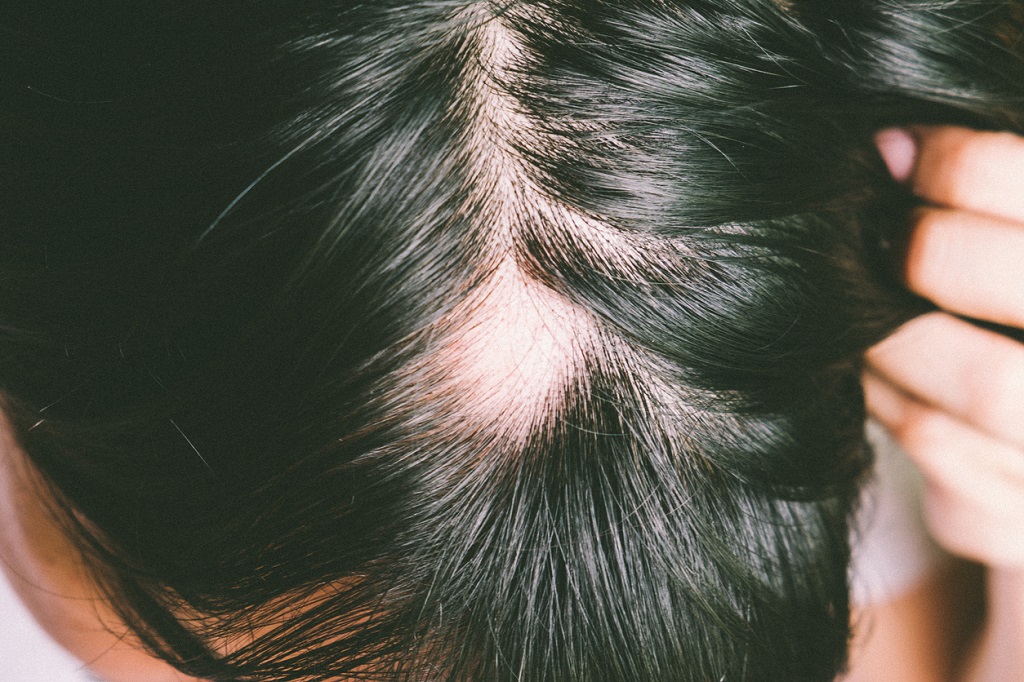You may have heard or met someone who started having sudden hair loss and major head flaws. So, do you know what alopecia is? It is precisely this disease that causes hair loss in large quantities, forming imperfections and, in more specific cases, even baldness.
Thus, alopecia is a disease that can affect men or women, for different reasons. However, it has a treatment to prevent blemishes from increasing and can even regrow hair, all under the supervision of a dermatologist.
What is alopecia?
First of all, alopecia is a condition that causes hair on the scalp or some other area of the body with a lot of hair to fall out, such as the eyebrows. Thus, large areas of the flaw are visible to the naked eye, showing skin that used to be hair or hair.
Types of alopecia
In short, when someone has alopecia, five different types can be causing the problem of hair loss. Above all, see what the following are.
Alopecia areata
When the body is fighting a disease (auto immunization) or even having emotional problems, this type of alopecia can appear. Also, there are no other symptoms besides hair or hair loss.
In summary, alopecia areata causes a person to have severe hair loss in certain areas, causing round patches to appear on the scalp with no hair, roughly the size of large coins.
Even so, total alopecia areata causes all hair to fall out on the scalp and universal areata causes all body hair to fall out. However, its evolution is not predictable, and hair can grow back or not, being very specific to each person.
Androgenetic
It is the well-known baldness, is caused by genetic factors, associated with the rate of testosterone in the bloodstream and, therefore, more frequent in men, because testosterone is the main male hormone.
Traumatic alopecia
It comes from the habit of constantly pulling strands of hair or trauma to the head such as bumps and bruises that leave scars.
Seborrheic
Caused by seborrheic dermatitis, which can be treated with the use of medications.
Effluent
Basically, this type of alopecia is identified by a period in which the hair falls naturally, however, when this mechanism is deregulated, there can be a longer period of hair loss, which generally responds and improves with treatments.
Signs of alopecia
In general, alopecia hair loss can be identified by the loss of 100 or more hairs per day. But since no one keeps counting hair lost on the floor or on the comb, you can tell if this happens when there are many strands of hair on the pillow in the morning or when many strands, not just three or four, are in your run. by the hair.
In addition, fingernails and toenails can also change, with white lines and sharp indentations appearing.
Causes
In general, alopecia can be the result of many things that happen to us, which are neither transitory nor momentary, such as:
- Recurring stress;
- Genetics;
- Too much chemical or poor quality chemistry on the hair;
- Poor diet and the consequent lack of nutrients;
- Use of continuous medications;
- Diseases, such as skin cancer, lupus, or diabetes;
- Deregulated postpartum hormones;
- Ringworm on the scalp;
- Menopause;
- Trichotillomania.
Difference between alopecia and common hair loss
Alopecia is different from common hair loss. In short, alopecia is related to other diseases of the body, which sometimes have no cure, only reduction or control of symptoms.
However, common hair loss occurs due to routine or unusual situations, such as too much stress or after part, which is a short time are reversed.
Hair loss risks
So if you want to prevent the appearance of alopecia at some stage in your life, then you need to know the risk factors and what influences it to manifest itself
- Hormonal problems;
- Stress;
- The pregnancy;
- Advanced age;
- History of baldness in the family (genetic factor);
- Excess weight loss;
- Lack of vitamin B12 and proteins;
- Too much vitamin A
- Diabetes and lupus.
Treatment
Finally, to identify alopecia and define the best treatment, it is necessary to have an evaluation by a dermatologist. In short, each type of alopecia can receive more effective treatment.
However, alopecia is treated with topical drugs, that is, directly applied to the affected region, such as corticosteroids, anthralin, and minoxidil. Still, corticosteroids can be injectable to have the most precise effect in one area.
Still, cosmetic products such as lotions or ampoules and food supplements are excellent to complement the treatment of more severe cases.
In addition, other specific and more expensive treatments such as carboxytherapy and intradermotherapy (laser treatments) can be performed with a professional and with a medical recommendation.
Thus, with treatment, the disease can be controlled, reducing defects and preventing new defects from arising, since the growth of the hair root follicles is stimulated, and this is necessary until the disease disappears. In addition, introducing a good diet is essential, because this way the hair will have the necessary vitamins to grow strong.
